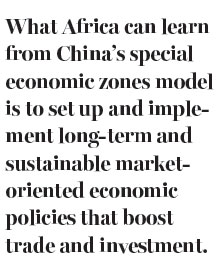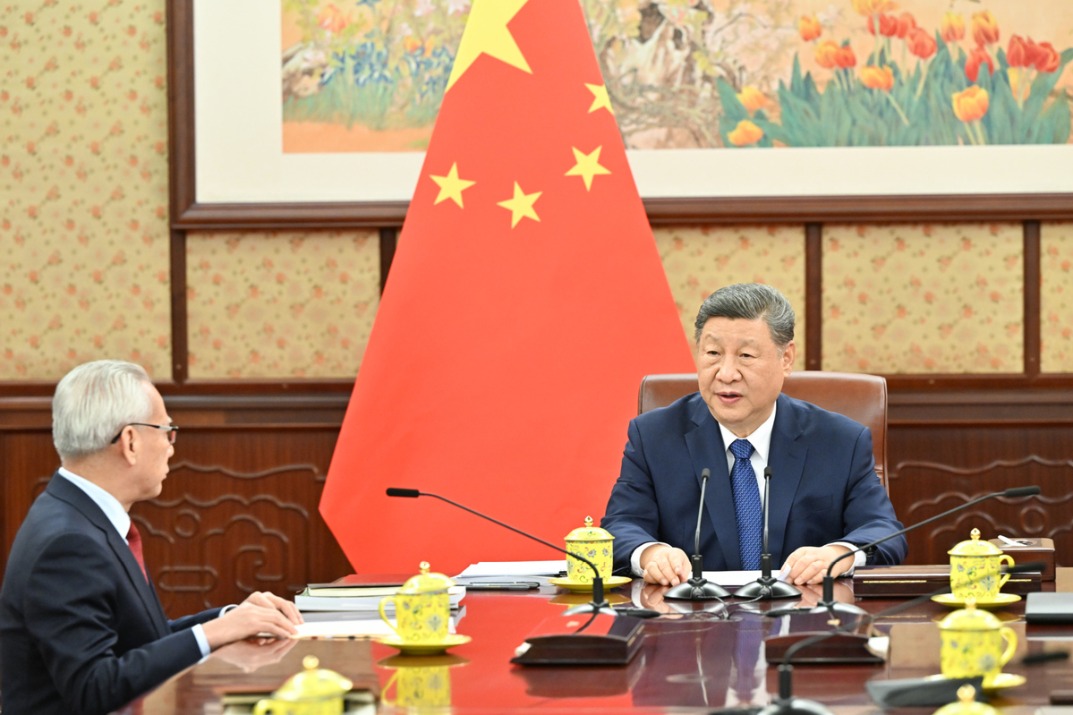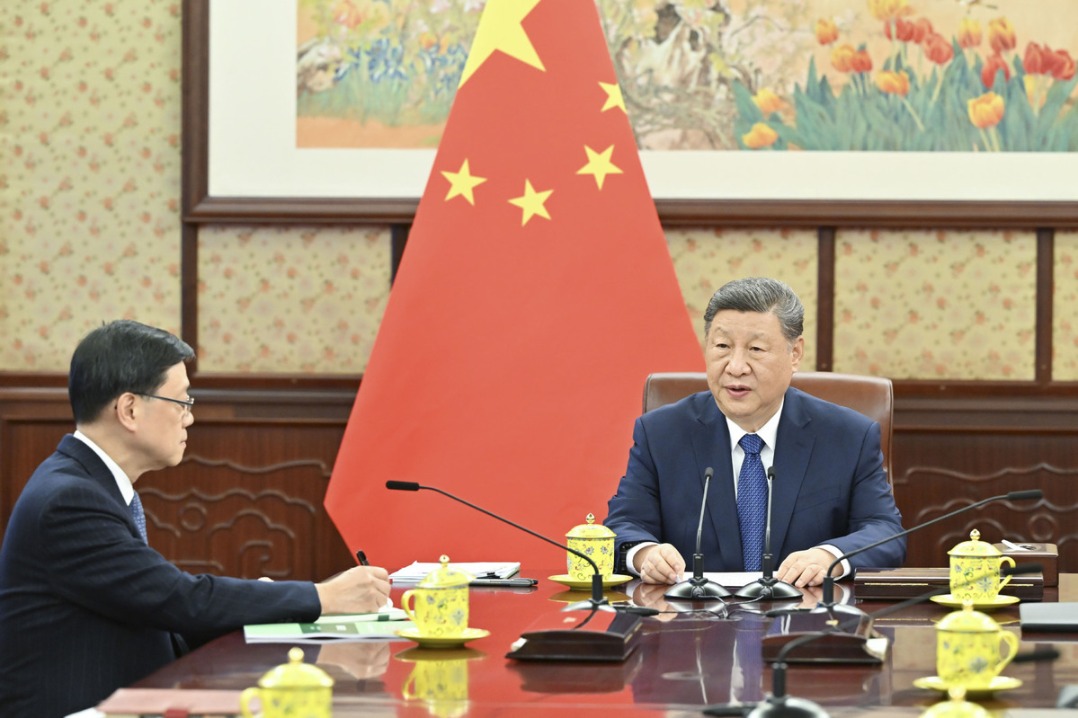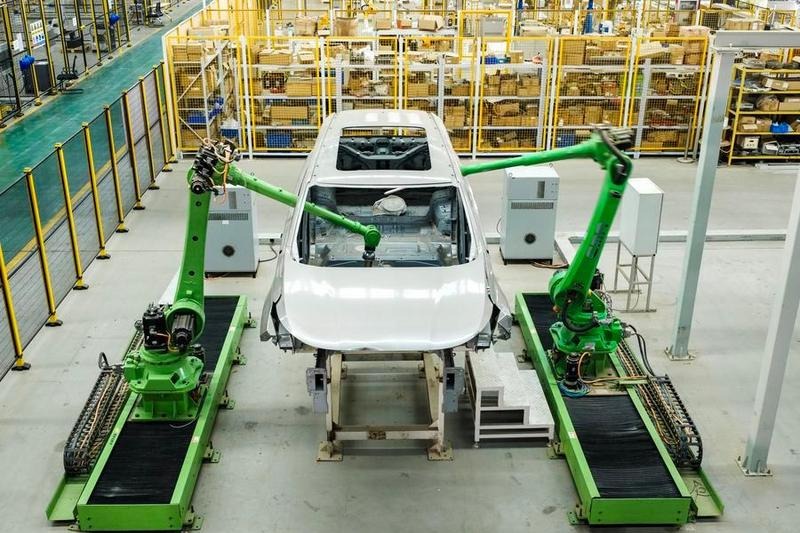Experience of SEZs offers valuable lessons

Since the establishment of the Forum on China-Africa Cooperation, China and Africa have made significant progress in advancing numerous aspects of human resource development.
The Chinese government has steadfastly fulfilled its promise to provide human resource assistance to African countries within the stipulated time; and in the face of a dawdling global economic recovery in recent years, China-Africa trade cooperation and development have sustained a relatively positive momentum.
China became Africa's primary trade partner in 2009, and since then, the scale of trade has expanded rapidly, with Africa becoming China's major import source, second-largest overseas infrastructure project market and fourth-largest investment destination.
What then could be the reasons underpinning such expansion? The answers lie in the nature of China-Africa relations.
Bilateral economic and trade cooperation has improved people's lives and diversified economic development in many African countries, provided strong support for China's socioeconomic development, and contributed to promoting South-South cooperation and balanced world economic development. How?
China's entry into the African trade and development space offered the continent another choice of economic partnership, which traditionally relied on Europe and the United States. China's trade and economic development with Africa can be categorized into three models.
First, attitude matters: China views Africa as an equal partner, and it does not attach any political strings for development to take place.
Second, hard work: China is able to complete infrastructure projects in the shortest time, in the so-called China speed.

For instance, the Ethiopia-Djibouti electric railway was 70 percent financed by China's Exim Bank and built by China Railway Group and China Civil Engineering Construction. It took seven years to complete - from 2011 to 2017.
Third, township enterprise: China's trade and development cooperation with Africa seeks to address inequalities between urban and rural development.
In addition, China's massive trade and investment in Africa have been boosted by its rapid infrastructure development projects - in areas such as railways, roads and regional aviation.
In this regard, China's own experience in industrial development through special manufacturing hubs offers valuable lessons and opportunities for Africa's future growth and development. China introduced special economic zones in the early 1980s as part of its policy to open up to international investment.
Such economic reforms became a defining moment in its market-oriented economy as it spearheaded the establishment of SEZs that became the driving force for growth.
These SEZs are geographically designated trade zones used to attract foreign investors and boost local industrialization. They generally have trade laws that differ from the rest of the country, and companies are offered tax incentives for setting up operations.
Therefore, what Africa can learn from China's SEZ model is to set up and implement long-term and sustainable market-oriented economic policies that boost trade and investment.
Another lesson for Africa is that setting up special manufacturing hubs can boost the diversification of their economies and promote industrial development. China's experience shows that for hubs to succeed, African governments must improve infrastructure and technology and have an educated and competent labor force as well as efficient and effective administration.
Moreover, many African states produce raw materials of a similar nature, connoting strong competition between them. To minimize such competition, they will need to develop economic strategies based on competitive advantages that can maximize potential.
What Africa also needs to learn from the Chinese experience is that due to the continent's massive rural population and high levels of illiteracy, the State must be the primary driver of economic development.
In China, State-driven economic reforms commenced with the formation of rural enterprises, investment in manufacturing, and midlevel training. In this way, a series of reforms that were introduced and directed by the state hastened industrial productivity, leading to increased economic growth.
Another important note for African governments to grasp here is that Chinese economic growth did not come from the forces of the free market, as conventional theories of economic development dictate, but from State-led economic reforms.
Furthermore, Chinese SEZs may be instructive for Africa given its large agricultural and rural-based population, because by encouraging the growth of rural enterprises and not focusing exclusively on the urban industrial sector, China has successfully moved millions of workers off agriculture into industrial units without creating an urban crisis.
Africa can achieve this through public-private sector partnerships for strategic national-interest-led investments, given that the productivity of the labor force can be more important than capital.
Overall, for Africa's urgent development needs, that have profound effects on the population, such as infrastructure, health and education, the Chinese manufacturing model of development is as important as the China-Africa partnership.
The author is a research assistant at the Institute for Global Dialogue associated with the University of South Africa. The views do not necessarily reflect those of China Daily.
(China Daily Africa Weekly 08/04/2017 page9)
Today's Top News
- Crossing a milestone in the journey called Sinology
- Chinese, Russian media outlets urged to enhance cooperation
- Where mobility will drive China and the West
- HK community strongly supports Lai's conviction
- Japan paying high price for PM's rhetoric
- Japan's move to mislead public firmly opposed






























